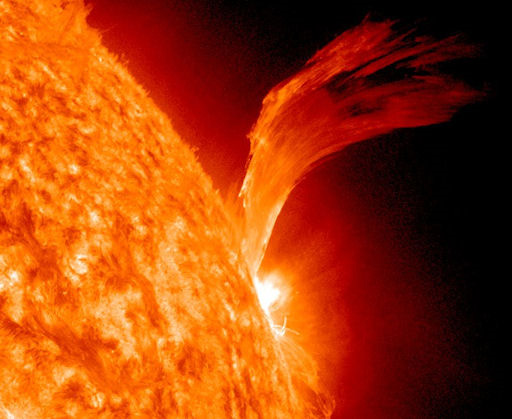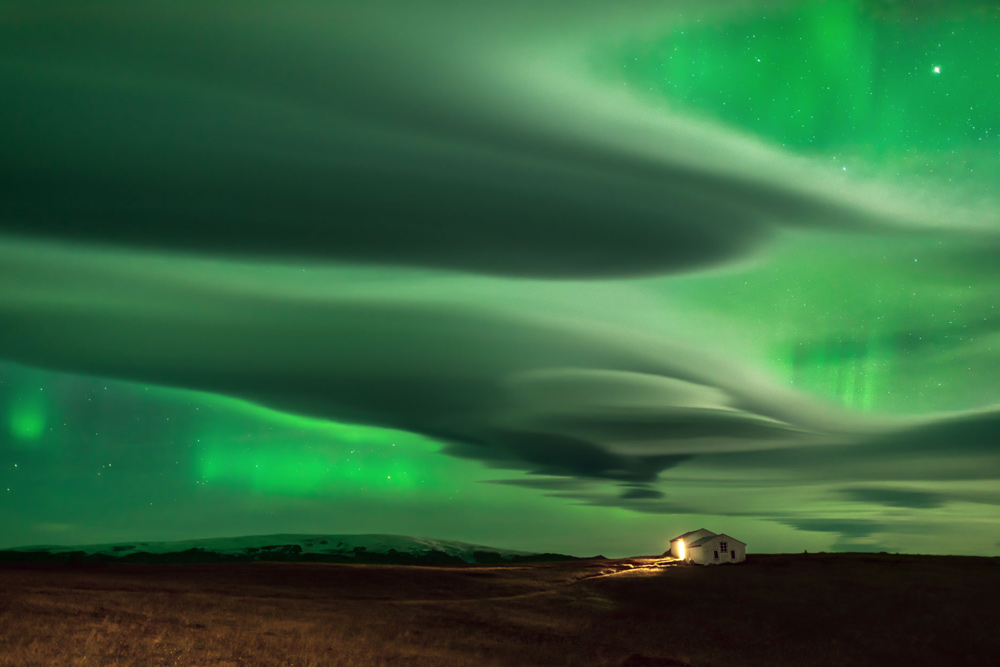
Why we need to get better at predicting space weather

This article was originally published at The Conversation. The publication contributed the article to Space.com's Expert Voices: Op-Ed & Insights.
Rami Qahwaji, Professor of Visual Computing, University of Bradford
The sun is the most important source of energy for sustaining life on Earth, but it gives us a lot more than just light and heat. It also gives us solar storms.
Disturbances on the sun, such as coronal mass ejections produced by solar flares that emanate from active sunspot regions, can cause solar storms. Solar flares and coronal mass ejections emit vast quantities of radiation and charged particles into space.
Many people still remember the collapse of Canada's Quebec electrical grid on resulting in power outages and reduced system functionality. Satellites, space stations and astronauts, aviation, GPS, power grids and more can be affected.
As our civilization becomes more advanced, we become more vulnerable to the effects of solar storms. Now, as the sun's activity is on the increase, we need to get better at predicting solar weather.
Many people still remember the collapse of Canada’s Quebec electrical grid on 13 March 1989, which lasted for nine hours and affected six million people. It caused hundreds of millions of dollars in damages and lost revenues. This blackout was caused by solar storms.
Get the Space.com Newsletter
Breaking space news, the latest updates on rocket launches, skywatching events and more!
These days, we're much more reliant on technology, which is in turn increasingly vulnerable to the effects of space and its unique natural disasters.dge technology in 1859 was limited to electrical telegraphs, and most of those failed all over Europe and North America, in some cases giving their operators electric shocks.
These days, we’re much more reliant on technology, which is in turn increasingly vulnerable to the effects of space and its unique natural disasters.
Space radiation
Space is vast, cold, dark and awash with radiation. Radiation in space comes mainly from galactic cosmic radiation — high energy particles thrown out from other galaxies — and solar particle events — high energy particles from our own sun.
In space radiation, atoms are accelerated in interstellar space to speeds close to the speed of light. Eventually, the electrons are stripped out and only the positively charged nucleus remains.
Humans have been observing and counting sunspots for more than 400 years, making this the longest running experiment in the world. The sun has an 11-year sunspot cycle, and at the moment, we are in the middle of that cycle. Now it's approaching "solar maximum," where the greatest solar activity occurs. The next solar maximum is expected to begin in 2025.

People are familiar with the northern lights, which is one visible effect of solar radiation. Earth’s magnetic field, which protects us from most of the dangers of space radiation, directs the charged particles to the poles, where they enter our atmosphere and cause beautiful light displays.
But the radiation can also impact technology and people. During strong solar radiation storms, energetic protons can damage electronic circuits inside satellites and the biological DNA of astronauts. Passengers and crew flying over the north pole would be exposed to increased radiation.
These radiation storms can create errors that make navigation operations extremely difficult. Energetic protons can also ionize the atoms and molecules in the atmosphere, creating a layer of free electrons. This layer can absorb high-frequency radio waves, causing a blackout of high-frequency communications, also known as shortwave radio.
With our increasing reliance on technology, predicting the weather in space is crucial. However, accurately predicting space weather has long been a challenging problem for experts.
Predicting space weather
Understanding the complexity of sunspots will help us predict whether significant solar flares may happen. My colleagues and I developed a real-time automated computer system which uses image processing and artificial intelligence technologies to monitor and analyse solar satellite data. This helps predict the likelihood of solar flares in the coming 24 hours.
We pioneered new techniques for automatic processing, detection and feature extraction of solar features — like active regions and sunspots — captured by NASA's solar dynamics observatory satellite. We also introduced the first automated and real-time system to classify sunspots. Before this, the classification of sunspots was a manual process painstakingly carried out by experts.
Read more: Four graphs that suggest we can't blame climate change on solar activity
Space missions and astronauts are much more likely to be affected by radiation, because they aren’t protected by Earth's magnetic field. The effects on humans could include radiation sickness, increased risk for cancer, degenerative diseases and central nervous system effects.
Despite these risks, human and robotic activities are increasing in space and NASA is working to land humans on Mars by the 2030s. There are two rovers — Curiosity and Perseverance — and one lander currently operational on Mars, with another rover planned for launch in 2022.
Our space weather prediction system is publicly available, and is now used as one of the decision-making tools for NASA's robotic missions and to manage radiation effects on NASA's Chandra X-ray Observatory orbit.
As we continue venturing further into space, we’ll need to strengthen our current space weather prediction capabilities to build a greater picture of solar activity and mitigate its effects around the solar system.
This task is incredibly challenging, as most solar observations are taken for Earth’s field of view. Better modelling and investigation of the evolution of solar features is necessary to accommodate for the drastically different celestial orbits around the Sun.
This article is republished from The Conversation under a Creative Commons license. Read the original article.
Follow all of the Expert Voices issues and debates — and become part of the discussion — on Facebook and Twitter. The views expressed are those of the author and do not necessarily reflect the views of the publisher.
Join our Space Forums to keep talking space on the latest missions, night sky and more! And if you have a news tip, correction or comment, let us know at: community@space.com.









